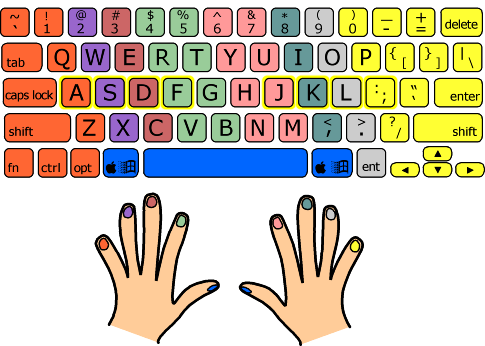Teachers
structure the learning environments but children structure the activities...
Welcome to my blog on educating diverse learners! This blog is a collection of personal views on education, tools and strategies to teach diverse learners, facts and policy updates about divers learners, and learners with exceptional learning needs (ELN).
Thursday, May 31, 2012
Thursday, May 24, 2012
Do you know how many classrooms are NOT taught by highly qualified teachers?
Excerpt from Illinois state plan on highly qualified teachers:
Read the entire doc:
ISBE Highly Qualified Teachers_State Plan
Read the entire doc:
ISBE Highly Qualified Teachers_State Plan
Friday, May 18, 2012
Google Related Research Feature
I found a good and simple Google search feature that could be potentially useful to teachers and students:
http://www.blindfiveyearold.com/google-related-searches
The above website introduces quite nicely.
I did a search with the key phrase "Lusitania ww1." I also clicked on "more search tools" on the left of the Google search screen. The result is that I get the following related key phrases to search for similar content on Google search:
http://www.blindfiveyearold.com/google-related-searches
The above website introduces quite nicely.
I did a search with the key phrase "Lusitania ww1." I also clicked on "more search tools" on the left of the Google search screen. The result is that I get the following related key phrases to search for similar content on Google search:
Related searches for Lusitania ww1:
Besides the above, I also got a list of websites related to this topic:
Monday, May 14, 2012
Google Docs in the Classroom
Google Docs in the Classroom
Strategies and tips for effectively integrating Google Docs with teaching and learning developed by Tom Barrett
Strategies and tips for effectively integrating Google Docs with teaching and learning developed by Tom Barrett
Friday, May 11, 2012
One of the barriers against effective use of assistive technology is that students do not want to appear different from the rest of the class. If you are the only person using a tool, that tool might set you apart from your peers. One solution is to educate parents about assistive technology so that the said student could practice basic skills and access course content at home. Parents could play a very important role in helping their children do catching-up work at home with the support of assistive technologies.
Sunday, May 6, 2012
Occupational Therapy and UDL
I chanced upon this article. Maybe you'd be interested in what the OTs have to say about UDL in this short article: http://www.udlcenter.org/sites/udlcenter.org/files/UDL.pdf
Thursday, May 3, 2012
Teaching Keyboarding, More Than Just Typing
An article from Education World about keyboarding training for students:
Free online touch typing tutorials & practice lessons: http://www.sense-lang.org/typing/
Judge for yourself what you could do for your students to train their keyboarding skills...
What "bell ringers" do you use?

An ideal audience would stand in ovation to the performer at the end of a show, or at least this is true in the dreams of all performers. Teachers sometimes feel like performers too and perhaps the dream of their students lingering long after class to talk about what they have learned spur on a lot of teachers to get better at their trade. The reality is, no sooner does the bell ring to signal the end of a class than the students pack up and leave the classroom.
What about at the beginning of the class? Are teachers quick enough to get the students to settle down when the bell rings to signal the beginning of a class? The pitfall for many teachers is that there is no plan or no good plan at that time to get their students immediately hooked on matters related to learning, if not to the content of the class. The result is a loss of precious instructional time and cropping-up of behavior issues in class. A bell ringer activity is a teaching tool to keep students engaged in thinking and learning. It could be used at the beginning or end of a class period. A good bell ringer activity can be guided by the three overarching principles of UDL: multiple means of representation, multiple means of action and expression, and multiple means of engagement.
A bell ringer activity should serve several important purposes such as:
- gauge students' background knowledge
- help students make connections with what they learned in last class
- make a topic fun to learn
- allow students different pathways to experience successful moments
- cue students to apply certain social and classroom rules for the next scores of minutes
- tap into students' creativity
- assess students' learning
A bell ringer should be meaningful, purposeful, and fun. It should not be simple copying act from a board.
What's your idea for an effective bell ringer? How may your knowledge of technology influence your design of bell ringer activities in your classroom? How may the UDL framework help guide your design of such activities in your lessons?
Some Internet resources related to bell ringers:
http://tuesdayswithkaren.blogspot.com/2009/09/bellringers.html
http://www.teachhub.com/exit-slips-effective-bell-ringer-activities
http://www.brighthubeducation.com/teaching-methods-tips/85130-bell-ringer-activities-for-your-classroom/
http://www.educationworld.com/a_lesson/lesson122.shtml
http://tuesdayswithkaren.blogspot.com/2009/09/bellringers.html
http://www.teachhub.com/exit-slips-effective-bell-ringer-activities
http://www.brighthubeducation.com/teaching-methods-tips/85130-bell-ringer-activities-for-your-classroom/
http://www.educationworld.com/a_lesson/lesson122.shtml
Subscribe to:
Posts (Atom)


